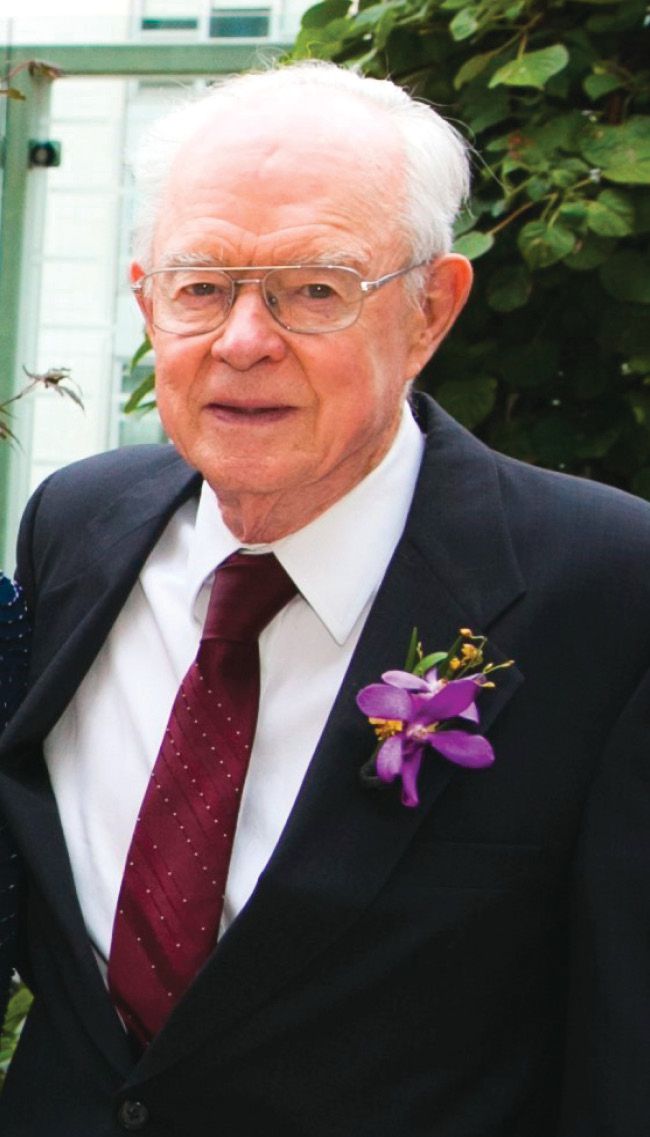Eugene Newman Parker
DOI: 10.1063/PT.3.5068
Eugene Newman Parker, the leading figure in heliospheric physics for the past half century, died of complications of Parkinson’s disease on 15 March 2022 in Chicago. Among other distinctions, he was the first individual to be honored by having a NASA mission—the Parker Solar Probe—named after him while he was still living.

Eugene Newman Parker
COURTESY OF ERIC PARKER

Parker was born on 10 June 1927 in Houghton, Michigan, in the Upper Peninsula. By the time he was seven, he and his family were living in suburban Detroit. As a teen, Parker bought a tax-delinquent property in the woods of Cheboygan County, 300 miles north of Detroit. For three summers he and his younger brother commuted by bicycle and camped out while they built a log cabin, which the family still uses. That captures the spirit of the man who was our colleague for so many decades.
Parker earned his undergraduate degree in physics from Michigan State University in 1948 and his PhD in physics in 1951 from Caltech. In the abstract of his thesis, done under the supervision of Howard Robertson and Leverett Davis, Parker wrote, “From the inadequacies of this non-magnetic theory, one concludes that magnetic fields must play a very significant role in the dynamics of the interstellar medium.” That prescient sentence foreshadowed a career devoted to studying magnetic phenomena throughout the universe. His thesis was one of the very few of his papers we could find that did not have Maxwell’s equations in it.
From Caltech, Parker moved to the University of Utah, where he was an instructor and then an assistant professor. Walter Elsasser, a trailblazer of dynamo theory for Earth’s magnetic field, had brought Parker to Utah, but with his many connections, he also brought Parker to the attention of John Simpson, a pioneer of space cosmic-ray physics, who recruited Parker to the University of Chicago in 1955.
By 1962 Parker was a full professor at Chicago, where he spent the rest of his career, retiring in 1995 as the Chandrasekhar Distinguished Service Professor. Along the way he chaired the physics department (1970–72) and the department of astronomy and astrophysics (1972–78), the latter during a rebuilding phase when he mentored David Schramm, who followed him as chair. Parker also provided both of us with wise counsel when we were chairs of that same department. We best remember his admonition to spend as little time as possible in the chair’s office.
Most of the more than 400 papers Parker wrote were single authored. His most famous was a 1958 Astrophysical Journal paper that predicted the solar wind and the spiral nature of the interplanetary magnetic field. The paper was revolutionary, and it was greeted that way. The first reviewer said, “Well I would suggest that Parker go to the library and read up on the subject before he tries to write a paper about it, because this is utter nonsense.” The second reviewer wasn’t any more positive.
Although the journal’s editor and Parker’s lifelong colleague Subrahmanyan Chandrasekhar was also unconvinced by the idea, he couldn’t find a flaw with Parker’s math, so he overrode the reviewers and published the paper. A year later the Soviet Union’s Luna 1 detected solar-wind particles, and that detection was confirmed by NASA’s Mariner 2 in 1962. The evidence for Parker’s basic picture was completed in 2012 when Voyager 1 left the bubble created by the Sun’s wind—the heliosphere.
That experience likely led to the advice Parker often gave young researchers: “If you do something new or innovative, expect trouble. But think critically about it because if you’re wrong, you want to be the first one to know that.” Parker never coauthored a paper with his students, instead urging them to be independent.
Parker’s seminal ideas on the origin of cosmical—his favorite term—magnetic fields and of fast plasma outflows, the rapid dissipation of magnetic field energy, the structure of magnetized shock waves, and diffusion of high-energy charged particles known as cosmic rays have permeated our understanding of astrophysical magnetism for more than 60 years.
Parker was humble, straightforward, and wise. His humility was illustrated by our email exchange with his son Eric, who said, “My sister Joyce and I didn’t get a real feel for what a ‘big dog’ our dad was in the field.” They got an even better sense when a month after Parker’s death, they traveled to Lund, Sweden, to accept on his behalf the Crafoord Prize in Astronomy awarded in 2020. Other major honors included the National Medal of Science in 1989, the Gold Medal of the Royal Astronomical Society in 1992, and the Kyoto Prize in 2003.
It is fitting that the Parker Solar Probe, a mission “to touch the Sun” and to better understand the million-degree solar corona, was named in his honor. In the words of Thomas Zurbuchen, NASA’s associate administrator for the Science Mission Directorate, “The field of heliophysics exists in large part because of Dr. Eugene Parker.” He and his family attended the launch on 12 August 2018 from Cape Canaveral, Florida, and shortly before he died, NASA scientists shared some of the early results with him.
More about the Authors
Robert Rosner. University of Chicago, Chicago, Illinois.
Michael S. Turner. The Kavli Foundation, Los Angeles, California, University of Chicago, Chicago, Illinois.
